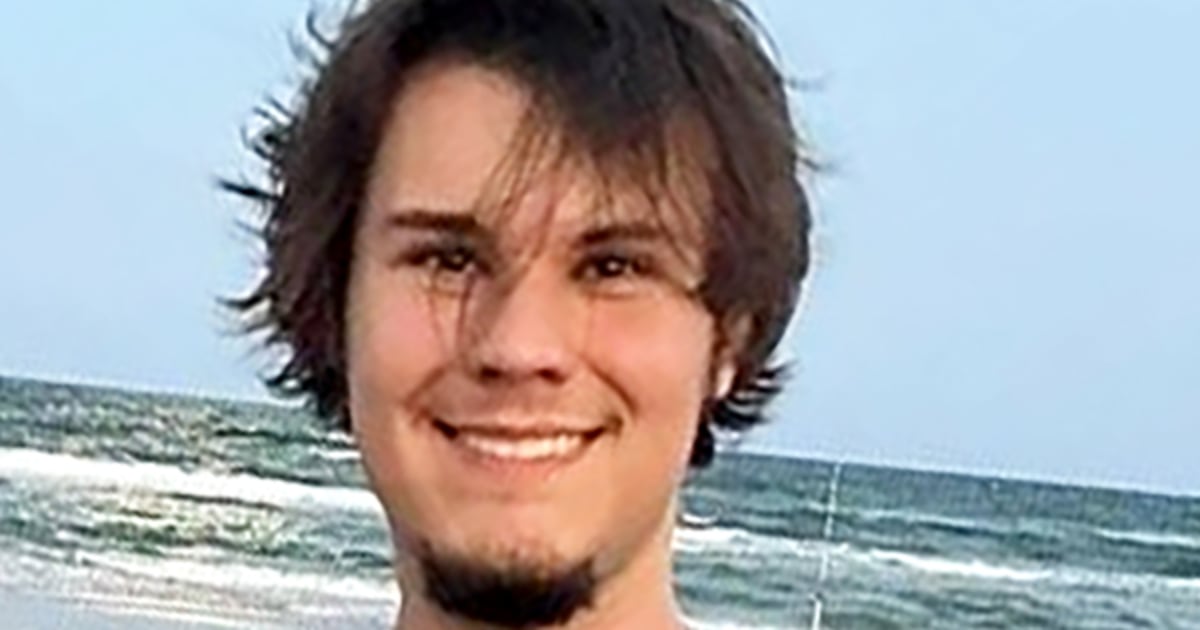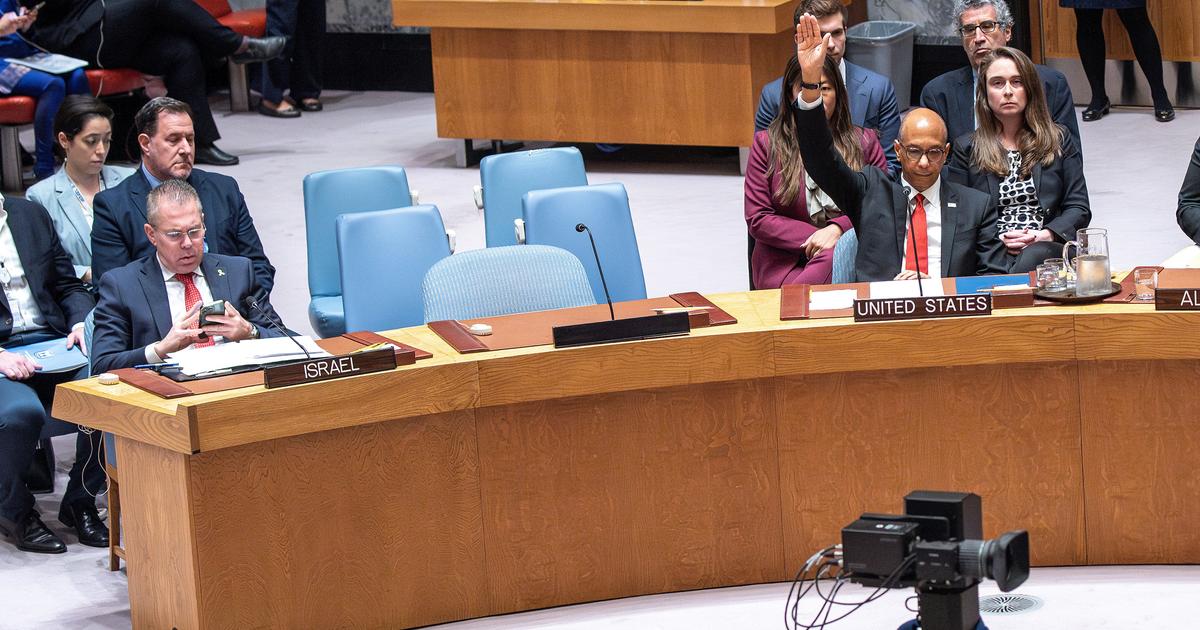Two children from the Quiche ethnic group in Guatemala who left behind school and misery.
An economist and a publicist from Honduras who couldn't find opportunities.
A young bricklayer from Mexico who was going to be a father for the first time and who tried everything to get to the United States.
There were 53 lives that were literally extinguished inside an abandoned trailer on the outskirts of San Antonio, Texas, on June 27: 26 Mexicans, 21 Guatemalans and six Hondurans who died of heat stroke, dehydration and suffocation. .
Behind the coldness of the figures and official balances, the life stories of the 53 deceased —as well as those of the 14 who survived—, when viewed closely, together, make up a mosaic of marginalization, alleys no way out and the loss of almost all hope, except one: escape.
A month after the greatest migratory tragedy in the history of the United States, EL PAÍS brings together the pieces of a puzzle that reveals an uncontainable phenomenon, between the usual triggers —poverty, violence, climate crises— and those that have led the desperation of those who migrate at levels that had not been seen: the pandemic, the collapse of legal channels and the persecution of the authorities, which have triggered the clandestine networks of human trafficking.
EL PAÍS has reconstructed the lives of the 53 deceased migrants based on interviews with their relatives, information corroborated by the authorities, the monitoring carried out by other media, and publications on social networks.
Click on the photos to know their stories.
The 53 of San Antonio, the lives broken by the greatest migrant tragedy in the US
Julio Lopez Lopez
Miriam Elizabeth Ramirez Garcia
Jozue Diaz Gallardo
Marco Antonio Velasco
Javier Flores Lopez
Mariano Santiago Hipolito
Yair Valencia Olivares
Yovani Valencia Olivares
Misael Olivares Monterde
Pablo Ortega Alvarez
Jesus Alvarez Ortega
Martial Trejo
Jose Guadalupe Narciso Lopez Muniz
Omar Rico Almanza
Maria Guadalupe Montero Serrato
Pedro Daniel Tellez Gonzalez
Alvaro Enrique Ojeda Salazar
Efrain Ferrel Garcia
Oscar Aguado Romero
Jose Antonio Perez Ramirez
Mayra Beltran Fraustro
Fernando Gallegos Garcia
Francisco Javier Delgado Rodriguez
Gustavo Daniel Santillan Santillan
Juan Jesus Trejo Tellez
Juan Valeriano Domitilo
Alejandro Miguel Andino Caballero
Fernando Jose Redondo Caballero
Margie Tamara Paz Grajeda
Adela Betulia Ramirez Quezada
Jasmine Nayarith Bueso Núñez
Belkis Esmeralda Anariba
Pascual Melvin Guachiac Sipac
Juan Wilmer Tulul Tepaz
Jonny Tziquin Tzoc
Karla Veronica Lopez Spain
Sebastian Och Mejia
Yeison Jimenez Abelarde
Rudy Chilel Yoc
Aracely Florentina Marroquin Coronado
Blanca Elizabeth Ramirez Crisostomo
Juan Carlos Vasquez Morales
Nicholas Meletz Guarcax
Enrique Romeo Chavez
Denis Isaias Niz Barrios
Donis Alejandro Galvez de Leon
Fidelino Mordecai Ramirez Sanchez
Maria del Pilar Ramirez Alvarado
Deisy Fermina Lopez Ramirez
Francisco Tepaz Simaj
William Rafael Ramirez Alvarado
Celestina Carolina Ambrocio Orozco
Wilson Daimiro Ambrocio Orozco
Julio Lopez Lopez
Age:
32 years
Origin:
La Trinitaria (Chiapas)
Olga Gallegos was confident that everything would turn out well.
Seven years ago, she herself had traveled in the box of a trailer to Alabama.
She did not know, however, that Fernando Gallegos, her brother, planned to follow in her footsteps.
For about a year, Fernando had had it in his head to leave Estancia de Ánimas, a small town in the Mexican state of Zacatecas, but he had no money for the pollero, as they are called in Mexico and Central America. engaged in clandestine crossings.
He first asked his nephew Raúl, Olga's son, for a loan, but the boy couldn't help him: he still owed money to traffickers from his own crossing, three years ago.
His sister decided to support him, she broke her back cooking in a restaurant and sold tamales on weekends to give Fernando an escape route, who did not see how he was going to carve out a future for himself and his three children in the family garden.
"He wanted to come to support his family," says Olga.
Fernando Gallegos left in mid-June with his neighbor Francisco Javier Delgado and with Mayra Beltrán, a friend who was a single mother of two girls and who wanted a job where Olga works.
"When I found out it was a very hard blow, I didn't even know what to say," she laments.
"I lost three people."
Victorino Ramírez is still assailed by doubts.
Her daughter, Blanca Elizabeth Ramírez Crisóstomo, was desperate to leave her village in the department of San Marcos, in western Guatemala.
She had already tried it this year.
In February, the 23-year-old grew tired of waiting for an opportunity as a rural teacher and she set off across Mexico, only to be detained by immigration authorities.
"She was locked up for 30 days," says her father.
When she was deported, she decided to turn to the smugglers.
She sacrificed all her savings and her family sold a piece of land to pay part of the $11,000 they were asking for.
"Pray for us, we're just going to leave," she told her family before boarding the trailer.
Her father turns to the same questions.
How could he convince her not to leave her.
What would have happened if they didn't catch her the first time.
When will you see your daughter again?
"It was her dream because here there is nowhere," says Mr. Ramírez resignedly.
San Marcos, the place of origin of Blanca Elizabeth Ramírez, has been especially marked by the tragedy.
Of the 21 Guatemalans who died in the San Antonio trailer, 13 came from this rural enclave in northwestern Guatemala.
The region is one of those places that over time becomes a host of reasons to emigrate: prone to disasters such as floods or droughts, with poorly paid and scarce employment beyond agriculture, in addition to bordering with Chiapas, which has historically opened a migratory corridor for the Central American exodus.
From Sololá there are six other Guatemalan victims.
In both departments, at least seven out of 10 people live in poverty.
Around 1.4 million Guatemalans have been forced to find a living outside the country.
"If he had known that he was going to take a trailer, he would have told him that it was not there, but they deceived him, it was not what they had told him," says Francisco Díaz Gallardo.
His brother Jozué wanted his revenge in Denver, where he had already worked for a long time in construction and where another brother who had lived there for years was waiting for him.
He then crossed the Atlantic and decided to try his luck in Barcelona, but the pandemic erased any chance of staying and he had to go back to work as a taxi driver in Tlahuitoltepec, a Mixe community in the Sierra Norte de Oaxaca, one of the three poorest states in the country. where three out of 10 people live in extreme poverty, according to official data.
After crossing into Texas through Laredo, from where the truck with the 67 migrants departed, his family did not hear from him again.
Jozué Díaz Gallardo was the first Mexican migrant identified in the San Antonio migrant tragedy.
“We were praying for 17 days for the body to arrive,” Francis recalls.
"It was a double pain, for his death and for waiting," he says before hanging up the phone.
Marcial Trejo spent his life crossing borders.
For him it was a regular resource, a risky ace up his sleeve when work began to be lacking in his native Querétaro and the money disappeared.
The first time he entered the United States he did so on foot.
"He told me that he suffered a lot, that he didn't want to go through that again," says his wife, Rosa María Angélica Martínez, on the other end of the phone.
They met 10 years ago, fell in love and made a living all over Mexico and the US, wherever there was a job.
When Martínez first became pregnant, she went to the US to give birth.
So her daughter, when born there, could have a US passport.
Trejo followed in his footsteps as soon as he could.
They had three girls, who are now four, six and nine years old.
“Marcial really liked basketball and playing with them”,
The last year was spent in Georgia, where a brother of his got him a job as a bricklayer.
His goal was to save for a little house they had bought in Jalpan, Querétaro.
One bad day he had a run-in with the police, and between that and his record — more than 10 years ago he spent time in a US prison for a drug issue — he was deported.
"Two weeks before what happened, he told me that he was going to find a way to come here to be with us, that we were going to achieve what we had always wanted," says his wife.
"When they told me that he had died in the trailer I said to myself, 'but how?' He always told me that this was very dangerous, it was the first time that he had used a trailer to cross," she says resignedly.
His body was buried in Querétaro.
His family, without any source of income, remains in the United States.
The Texas tragedy took its toll on the youngest.
The average age of the victims was 26 years.
In Mexico, the youngest deceased was Pedro Daniel Téllez González, who had barely turned 16.
The youngest of the 53 was Guatemalan Pascual Melvin Guachiac Sipac.
He had turned 13 on April 30.
His cousin Juan Wilmer Tulul Tepaz, barely a year older than him, did not survive either.
Family and friends of Jair Valencia, 19, Yovani Valencia, 16, and Misael Olivares, 16, attend his funeral in Veracruz, Mexico. YAHIR CEBALLOS (REUTERS)
Jair Valencia, Misael Olivares and Yovani Valencia lost their lives inside a trailer along with 50 other people in San Antonio, Texas. FELIX MARQUEZ (AP)
Funeral of Jozue Díaz Gallardo in Santa María Tlahuitoltepec, in the state of Oaxaca, Mexico.
Of the 53 deceased migrants, 26 were Mexicans. JORGE LUIS PLATA (REUTERS)
A relative of Pascual Melvin Guachiac Sipac, 13, hugs his coffin during the funeral, in Tzucubal, Nahuala, Guatemala, on Saturday, June 16, 2022. Oliver de Ros (AP)
Funeral of Pascual Melvin Guachiac, 13, in the town of Tzucubal, in Nahuala, Guatemala, on July 16, 2022. SANDRA SEBASTIAN (REUTERS)
Juan Och Mejía places a banner that says "the American dream ends in tragedy" on the coffin of his brother Sebastián Och Mejía. LUIS ECHEVERRIA (REUTERS)
Casimiro Guachiac cries next to the coffin of his son Pascual Melvin Guachiac, 13, during the funeral in the town of Tzucubal, in Guatemala, on July 16, 2022. SANDRA SEBASTIAN (REUTERS)
Attendees at the funeral of Pascual Melvin Guachiac, 13, leave coins on his coffin to help his family with burial expenses.
SANDRA SEBASTIAN (REUTERS)
Relatives of the deceased Pascual Melvin Guachiac, 13, deposit his coffin in a grave.
SANDRA SEBASTIAN (REUTERS)
Relatives of Francisco Javier Delgado Rodríguez, 32, hold a photograph of the deceased during the funeral in Estancia de Ánimas, Zacatecas.STRINGER (REUTERS)
The tombs of Jair Valencia, 19, Yovani Valencia, 16, and Misael Olivares, 16, in a cemetery in the town of San Marcos Atexquilapan, in the state of Veracruz. YAHIR CEBALLOS (REUTERS)
“We are already here on this side in Texas.
We have been here for three nights and three days, and the kids are very desperate, ”said Juan Jesús Trejo Téllez, a migrant from the State of Mexico, in a video sent to his family.
"Here there are about 50 people and all crowded together," he narrated.
Several victims documented his journey.
Almost all of them crossed the Rio Grande and crossed the desert guided by the smugglers, and several even claimed to have seen how other migrants did not survive along the way.
The 40 men and 13 women who died arrived in different Texas border cities, such as Roma, McAllen and Laredo, the starting point of the truck before being found in San Antonio, according to the accounts of the deceased and survivors.
In multiple testimonies published in recent weeks, victims say they waited for days in Texas safe houses, guarded ranches or warehouses.
The traffickers limited communication with their families, made them believe they could be tracked by their phones, and decided each day who went out and when.
"I didn't know he was going to get into a trailer," says Daniel Delfino Marroquín, father of Aracely Marroquín, a young Guatemalan woman who died at the age of 21.
"People were screaming, some were crying, especially the women asking to stop and open the doors because the truck was hot and they couldn't breathe," recalled Yenifer Cardona, a 20-year-old Guatemalan survivor, in an interview with the AP agency. .
"With the heat we are here sweat and sweat," said Trejo Téllez from inside.
Caitlyn Yates, of the Strauss Center for International Law and Security, points out that as operations to curb migrant smuggling have tightened, trailers have become an increasingly common migration alternative.
About one in ten migrants has traveled by cargo transport at some point on their way north and more than 80% eluded immigration controls in 2021. The trailer from San Antonio passed through two immigration checkpoints without being stopped.
Texas was not an isolated case and the phenomenon is becoming more common.
This same week a trailer was abandoned in Veracruz (Mexico) with an estimated number of 400 migrants.
The discovery of the abandoned trailer on the outskirts of San Antonio (Texas) with 67 migrants inside, on June 27. JORDAN VONDERHAAR (Getty Images via AFP)
Arturo Rocha, who coordinated the response of the Ministry of Foreign Affairs in Texas, explains that initially there was an overestimation of the deceased Mexicans because several official credentials were found that were not those of the people who died.
The most plausible hypothesis is that the traffickers gave them to transit through Mexico without being arrested.
Yates points out that there are several services offered by human trafficking networks.
In some cases, smugglers provide a “complete relocation package” that includes various means of transportation for each stage of the journey, lodging, the opportunity to try again if arrested along the way, or the ability to pay in installments.
The truck is just one link in a clandestine network that stretches for thousands of kilometers and leaves around 1.
In Rocha's opinion, the tragedy is a reflection of the need to address the causes of migration in the communities of origin and to clear the legal pathways for migration, asylum and refuge.
"We need an escape valve for people who want to work legally," says the coordinator of Public Policy and Strategy for North America.
Mexican authorities have completed the repatriation of the bodies and have pushed for the three survivors from Mexico to receive immigration relief that allows them to stay in the United States.
Four suspects have been arrested, including two Mexicans.
Juan Francisco and Juan Claudio D'Luna, father and son, 48 and 24 years old, are accused of illegally carrying weapons, according to the open file in Texas.
The Americans Homero Zamorano Jr. and Christian Martínez are directly accused of transporting the migrants and could be sentenced to life in prison if found guilty.
Last March, Álvaro Enrique Ojeda, another of the deceased, shared a post on his Facebook that had something foreboding: “I love it when the vatos from my ranch go to work in the United States.
They are badasses, not everyone has the courage to leave his family and the warmth of his house to look for a better future, give it a lot of desire, every sacrifice has its reward, compas ”.
Three months later, he knew the sacrifice, but did not get to enjoy the reward, like 52 other victims.
A month later everything is mourning, altars and memories of the dead.
"The days go by and I don't know if I'll ever be the same again," says Olga Gallegos.
Ahead is the challenge of trying to continue with her life.
subscribe here
to the
newsletter
of EL PAÍS México and receive all the informative keys of the current affairs of this country















